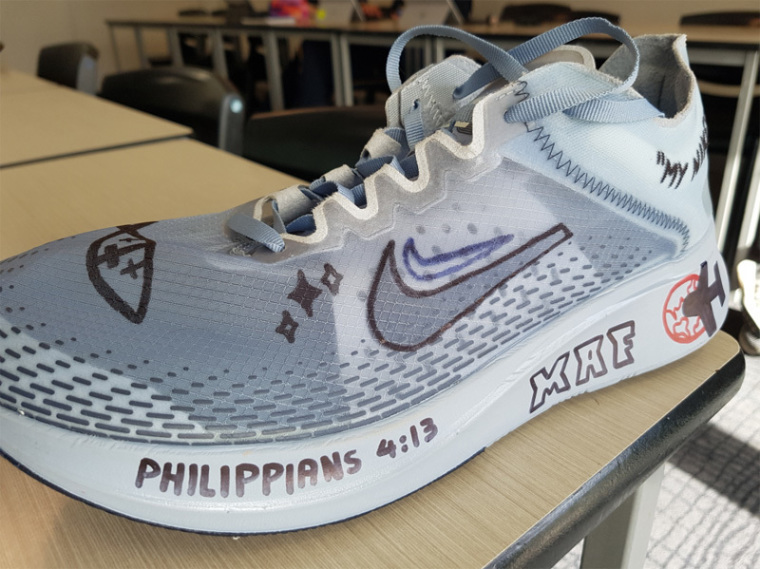
“It is not in the spirit of athletics,” says Australian marathon great Rob de Castella. Many athletes are calling for it to be banned saying it provides an unfair advantage.
The Nike Vaporfly 4% running shoe was designed as part of the “Breaking 2” project. The aim was to have a runner break the “unbreakable” two hour barrier for the marathon.
This project saw Nike review all variables impacting a marathon time. For example, the course had to be flat, without wind and in a cool climate. The athlete’s training and diet had to be closely monitored. And the athlete’s shoes were redesigned. The end result was the Vaporfly. And the results seem extraordinary.
Both Nike and independent research have suggested that the shoe could help a runner by up to 4% over other competitor’s shoes. So why is this shoe so fast and should it be banned for providing an unfair advantage?
Why so fast!
I have tried the shoe and know many others that have used them. The general agreement is that the shoe does make a difference. From my own review, the big difference is that the shoe does not beat up my legs like a traditional lightweight racing shoe.
Let me explain: Other shoes are lighter and offer a firmer more responsive feel while running. However, over a longer distance your legs tend to absorb more shock and therefore fatigue faster giving you that “dead leg” sensation. Vaporfly is designed differently to address this issue.
The secret of the new design comes from a more absorbent lightweight midsole foam and a carbon plate to give the shoe strength and resilience. Firstly, the midsole foam has always been the holy grail of running shoes. All the foams developed since the 1970’s have become lighter, absorb shock more efficiently and return to its normal shoe with less distortion.
The new foam used by the Vaporfly is just a progression of this evolution. It is very light, but not as light as some other shoes. The key aspect of the shoe comes from the thickness. Being thicker it can absorb and spring back into shape more consistently. The result for the runner is that their legs are fresher compared to the often flatter and harder competition.
Secondly, the key factor, I believe, is the carbon plate used in the Vaporfly. This stiff base gives the shoe stability, remembering the foam is very soft. But the main advantage is that it plate springs back into shape. Researchers suggest this could provide a propulsive push for the runners as it returns to its shape.
A ban?
The problem in calling for a ban on this shoe is that it could be too vague and unworkable. It is difficult to ban a type of foam because midsole foams have been evolving for years. And if the main purpose of foam is to prevent injury and help the runner, then what does this mean?
Are we saying that people cannot wear shoes that protect their legs “too much.” And as for the carbon plate, officials would have to ban the level of stiffness because there are plenty of shoes in the market with and without carbon plates (including football and track spike) that provide similar stiff shoes.
The issues is more complex than simply banning a shoe. Shoe companies will always be looking for ways to make shoes better.
Deek, who ran with a light but older foam, ran 2 hours 7 minutes and 51 seconds for the marathon. In comparison current world record holder from Kenya, Kipchoge ran just under two hours.
As the Breaking 2 project demonstrated there are many other factors apart from the shoe that make the difference between these two runners. And it is in the nature of the sport to always want to go faster. Regardless of all this, magazine reports that the World Athletics Association will make a decision about a ban very soon.

Jeremy Dover is a former sports scientist and Pastor
Jeremy Dover's previous articles may be viewed at https://www.pressserviceinternational.org/jeremy-dover1.html
And https://www.pressserviceinternational.org/jeremy-dover.html